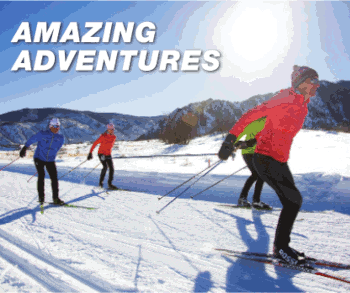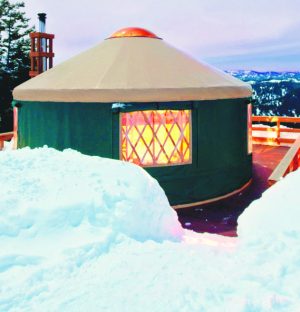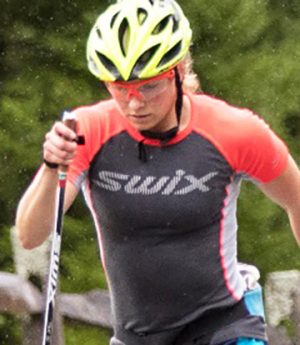July 9, 2008 – In late March John Farra, ex-Olympian, ex-U.S. Ski Team member and ex-Vice President of the Maine Winter Sports Center was named as the USSA’s Nordic Director, replacing Luke Bodensteiner, who was recently named Associate Athletic Director of High Performance for the USSA. Following his athletic ski career, Farra spent his last 13 years since graduating from the University of Utah getting to know cross-country skiing as a coach and in sports management, which should will serve him well in his new position.
John, welcome and congratulations on your new position. You’ve been on the job for about 3-4 months, have been to tons of meetings, traveled many miles, met officials, coaches and athletes. Any initial comments about your impressions, the direction you’d like to take things, and what you hope to accomplish, and do you have a particular style?
John Farra: To be honest it has been a whirlwind these past few months. It was a hard decision to leave my position and my community up in Northern Maine, but they are in good hands and I welcome this new challenge. My impressions are that we have come a long way since Luke and I were members of the U.S. Ski Team! This is a world class program with professional coaches, athletes, service techs, sports science staff and administrative staff who are all subject to review and who undergo extensive short and long-term planning to justify their programs and continued support.
I am part of a TEAM with 10 coaches, 6 service staff and 35 athletes all aimed at winning medals in their respective sports. My job is to support their efforts towards that end and lend my experience and wisdom when appropriate. My style? Well, I guess those who know me well might describe me as intense… both at work, and at play.
Can you tell us about the process that took place to name you to the position? We saw the announcement of your appointment but nothing about the job search?
JF: I can’t speak to the “job search”, but I can tell you that Luke seemed to have a good amount of faith in my ability to come in here and hit the ground running. It is a unique position that sounds glamorous, and at times it may be, but really, it requires a massive amount of computer time, political savvy and a willingness to make tough decisions. There is a ridiculous amount of work that needs to be accomplished to keep my three sports working, and I still have a ton to learn, but each day I pick up a few more tricks to make it happen.
Many people in the Nordic world might not realize that you’re responsible for XC skiing programs as well as for Nordic Combined and Ski Jumping. Can you tell
us about your experience with those sectors? When was the last time you launched yourself off a jump?
JF: Growing up in Lake Placid allowed me plenty of opportunities to interact with the ski jumping and Nordic Combined community. I have fond memories of a young Lindsey Van (one of our best women ski jumpers) and Billy Demong from my time at the National Sports Academy, and now I get to support their efforts to win medals at the coming World Championships in Liberec. I feel very comfortable providing support and leadership to these great sports. While I have never strapped on official ski jumping equipment, I have been know to launch myself off plenty of jumps. My daughter has expressed interest in the Learn to Jump program here in Park City, and she asked if I could go off the jump with her, now that would be interesting… doubles ski jumping!
Why has Nordic combined been so solid for many years yet men’s jumping is struggling to stay alive? The program dynamics seem similar i.e. small grass roots base, three international centers for competition, training and development.
JF: It is true that we appear to have a solid track record in Nordic combined, and we need to keep that going. But really, it’s still a delicate scenario. We have a very limited field of participants in both sports compared to the countries who we battle against for medals, so this is part of our challenge. I look forward to reviewing the dynamics of both sports and help to create strategies that the clubs can use to infuse their sports with talented participants, or to retain and further develop the athletes in their system already. The USSA Jumping/Nordic Combined Sport Committee is actively engaged in keeping the ski jumping and Nordic combined tradition alive and well here in the U.S. Of course it will help if we can strike our first Olympic medals in these sports soon.
Women’s ski jumping is creating quite a stir regarding inclusion in the Vancouver 2010 Olympics but the IOC maintains overall international involvement isn’t great enough to justify their participation. US jumpers are among the “leading ladies” in filing a lawsuit against VANOC (VANOC’s response). Can you bring us up to speed and is this action sanctioned by the USSA?
JF: While I won’t speak to the ligation, I will tell you that we are 100% focused on winning medals at the first ever World Championships for women’s ski jumping in Liberec in February of 2009! This is the most important event to date for women’s ski jumping, and this event needs to display the talent and professionalism that these women bring to the sport. It is my feeling that their performance there will solidify their future in the sport. We have some excellent women ski jumpers and I want very much for one of them to be the first world champion this winter!
In Canada coaching is treated as a profession requiring coaches to be educated and certified. In the US there seems to be hit-and-miss programs with each division. Is there anything in the pipeline for the development of a strong National education/certification plan for coaches? Is there any support here from the USOC?
JF: Until recently, the US provided only biennial coach education seminars that acted as our education cornerstone. With the implementation of a larger coaching staff, we created an excellent technique CD in 2007 that highlights what we are teaching in terms technical efficiency. I am proud to announce that our U.S. Ski Team coaching staff has been hard at work with our education department on a coaches education certification program. Level 100 will be launched this fall. It is our hope that we can get every coach in the pipeline to complete this certification process as a step towards a consistent and effective National Development System. While Level 100 will be an introductory level course, it will cover every step of our Elite Development Pipeline, thereby detailing critical fundamental coaching points for every age group. The following summer we will launch Level 200, followed shortly by Level 300. Every level will be based on the framework of our Elite Development Pipeline. I want to commend the coaching staff, especially Matt Whitcomb, for driving this process. This is a huge project that is above and beyond their coaching duties. However, because this system is created by our US Ski Team coaches, we feel the dissemination of education materials will be most effective.
In the US international content at the national racing level has been virtually non-existent for the past 10-15 years but Canada is doing OK in this area. Does the US have any plans to fill this gap in the future?
JF: I have fond memories of the athletes who would come to the U.S. for our Spring Series and Super Series events, and I agree it added value to our events. I have not thought about this issue much yet, but I can tell you that we have had great dialogue with the Canadians regarding joining our schedules as much as possible. This year they will be coming to West Yellowstone and Bozeman for our first SuperTours and we have freed up our schedule to promote people joining the Canadians at the Whistler Olympic Park in mid-December. In addition, we would expect U.S. athletes to participate at the Canadian Nationals in mid-March, and for the Canadians to join us for our Long Distance U.S. Nationals the last weekend of March. Since both programs are on the rise internationally, it is great to bring our athletes together for competitions as often as possible.
With the Center of Excellence training center that is being built in Park City what will it’s role be for NC, Ski Jumping and Cross Country programs – a top team center or a development program center? NC is centralized in Park City and has been the most successful USSA Nordic program. Is this a model for all the disciplines to follow and centralize in Park City?
JF: The Center of Excellence is going to be an impressive complex joining administration with world class sport science and training facilities for the athletes. It is another tool that the athletes can take advantage of to help them be the best. For Nordic combined and women’s ski jumping, it has worked well to be centralized in Park City, but that doesn’t mean that makes sense for every sport and for every athlete. Now, if we could offer our Olympic venues and our Center of Excellence along with athlete housing, then I think we would be really making it hard for athletes to turn down the opportunity to be headquartered out of Park City. I know that those of us who spend most of our time in the office in front of computers look forward to seeing the athletes do their thing. In the end, it is all about them, their dreams, and improving their chances to have that perfect performance, which will make it all worth it!
John, thanks for your time in a period when you don’t have enough fingers to fill all the holes. I think you’re into a program that is doing a lot of good things – the results indicate that – keep the ball rolling. Best of luck to
you and the teams!
JF: Thanks
Top News Stories
Interview With USSA Nordic Program Director John Farra
by Marty HallLeave a Reply
You must be logged in to post a comment.






![National camp action [P]...](https://skitrax.com/wp-content/uploads/2019/08/Duluth-4-2019-08-08-at-10.46.51-AM-300x246.png)
![Matt Liebsch on the CXC Elite Team [P] CXC...](https://skitrax.com/wp-content/uploads/2019/08/Matt-Liebsch-CXC.2-525x700.4-300x267.jpg)
![Dan LaBlanc [P]...](https://skitrax.com/wp-content/uploads/2019/08/Dan-LaBlanc-img_1855.3.jpg)

![USSA Nordic Program Director John Farra[P]Maine Winter Sports Center](http://skitrax.com/skitrax22/images/skitrax/4874c5f409c5dJohn Farra.2.jpg)